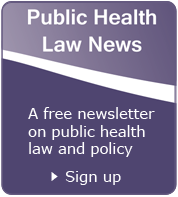Artificial Trans Fat
Winnable Battles Resources
Trans fats [PDF – 2.26MB] were created by chemists using a food process known as hydrogenation, where liquid oils are converted into solid fats. Trans fats, also known as partially hydrogenated oils, were intended to replace saturated fats, which were found to contribute to heart disease. Unlike other dietary fats, trans fats are not essential to human health, do not promote good health, and increase the risk for coronary heart disease.
The increased risk of heart disease has led several jurisdictions to reduce or eliminate trans fats from use in restaurants and schools. The Food and Drug Administration (FDA) requires trans fat to be listed on food labels. The availability of substitute oils for cooking and food manufacturing permits the banning of trans fat without hardships for restaurant food manufacturers.
Rule Making and Policy Statements
- United States Food and Drug Administration (FDA)
On July 11, 2003 the FDA published a final rule in the Federal Register that amended its regulations on food labeling to require that artificial trans fat be listed on the nutrition label of conventional foods and dietary supplements (68 FR 41434). The rule went into effect on January 1, 2006. - American Medical Association (AMA)
In November 2008, the AMA announced it had adopted a policy supporting legislation to ban the use of artificial trans fats in restaurants and bakeries in the United States (U.S.).
Local Legislation
- Center for Science in the Public Interest (CSPI) List of Local Trans Fat Bans
Several cities in the U.S. and local health departments have enacted statutes or promulgated rules or regulations prohibiting the use of artificial trans fats in restaurants. The CSPI maintains a webpage identifying the cities with an artificial trans fat ban in restaurants and the population directly affected. - New York City
The first jurisdiction to eliminate the use of artificial trans fats [PDF – 211KB] in restaurants in the U.S. was New York City (NYC) (Section 81.08 of the New York City Health Code). The NYC Board of Health voted to phase out artificial trans fats from restaurants in December 2006, but the implementation and enforcement of the regulation provided for an 18-month, phase in period. NYC also provides a compliance guide [PDF-498KB] for restaurants, caterers, mobile food-vending units, and others to ensure New York City food service establishments are aware of the artificial trans fat ban. - Philadelphia
In 2009, Philadelphia amended Title 6 of The Philadelphia Code, entitled “Health Code,” by prohibiting the use of artificial trans fats in restaurants and other food service establishments, under certain terms and conditions. The ban is on the use of trans fat in “restaurants, grills, diners, sandwich shops, dining rooms of hotels, coffee shops, cafeterias, taverns, market stalls, vending carts, vending vehicles and other similar places.” In the Philadelphia Code, Chapter 6, Section 300 titled “Food,” scroll down to Section 307 to find the provision related to the trans fat ban.
State Legislation
- National Conference of State Legislatures (NCSL) List of State Trans Fat Statutes
Last updated in October 2009, the NCSL website indicates there are 29 states that have considered legislation to limit or ban artificial trans fats in various locations including restaurants and schools. California and Vermont have pioneered state-wide artificial trans fat bans in restaurants, but many other states have proposed similar legislation, proposed or enacted artificial trans fat bans in schools, reduced artificial trans fat use in schools to less than 0.5 grams per serving, or enacted legislation to review the economic impact of an artificial trans fat ban at the state level. - California
The state-wide California artificial trans fat ban began on January 1, 2010, prohibiting oil, shortening, or margarine containing specified trans fats for specified purposes, from being stored, distributed, or served by, or used in the preparation of any food within, a food facility. Beginning January 1, 2011, the California artificial trans fat ban will prohibit any food containing artificial trans fat from being stored, distributed, or served by, or used in the preparation of any food within a food facility. The bill would exempt from these prohibitions specified public school cafeterias and food sold or served in a manufacturer’s original, sealed package.
Disclaimer: Information available on this website that was not developed by the Centers for Disease Control and Prevention (CDC) does not necessarily represent any CDC policy, position, or endorsement of that information or of its sources. The information contained on this website is not legal advice; if you have questions about a specific law or its application you should consult your legal counsel.
- Page last reviewed: August 19, 2016
- Page last updated: August 19, 2016
- Content source:




 ShareCompartir
ShareCompartir



